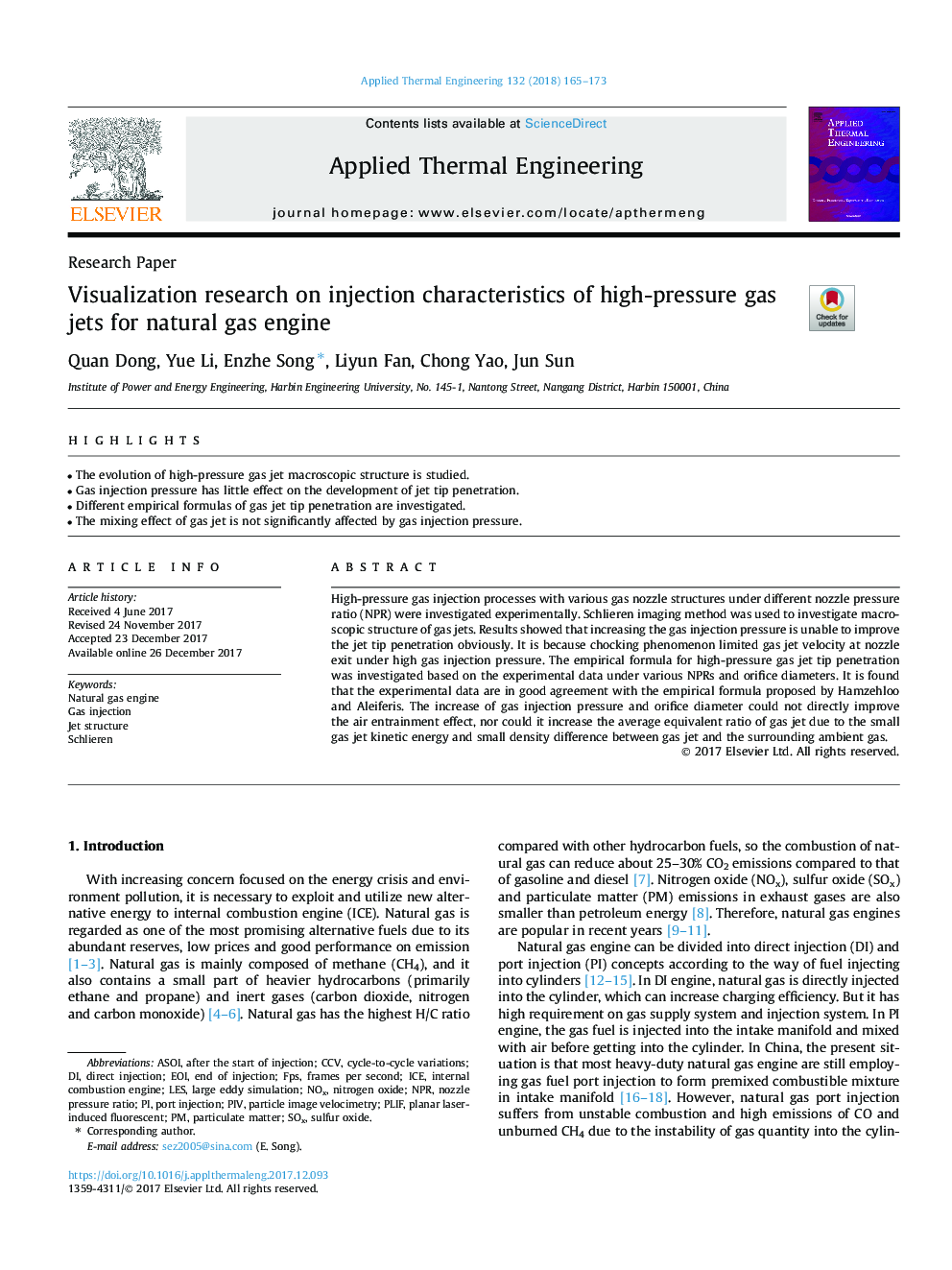| Article ID | Journal | Published Year | Pages | File Type |
|---|---|---|---|---|
| 7046020 | Applied Thermal Engineering | 2018 | 9 Pages |
Abstract
High-pressure gas injection processes with various gas nozzle structures under different nozzle pressure ratio (NPR) were investigated experimentally. Schlieren imaging method was used to investigate macroscopic structure of gas jets. Results showed that increasing the gas injection pressure is unable to improve the jet tip penetration obviously. It is because chocking phenomenon limited gas jet velocity at nozzle exit under high gas injection pressure. The empirical formula for high-pressure gas jet tip penetration was investigated based on the experimental data under various NPRs and orifice diameters. It is found that the experimental data are in good agreement with the empirical formula proposed by Hamzehloo and Aleiferis. The increase of gas injection pressure and orifice diameter could not directly improve the air entrainment effect, nor could it increase the average equivalent ratio of gas jet due to the small gas jet kinetic energy and small density difference between gas jet and the surrounding ambient gas.
Keywords
Fpsafter the start of injectionNPREOIPLIFSchlierenaSOILESCCVPIVNOxSOxnitrogen oxideSulfur oxidePort injectiondirect injectionGas injectionCycle-to-cycle variationsparticulate matterJet structureParticle image velocimetryLarge Eddy Simulationframes per secondNatural gas engineinternal combustion engineEnd Of InjectionIce
Related Topics
Physical Sciences and Engineering
Chemical Engineering
Fluid Flow and Transfer Processes
Authors
Quan Dong, Yue Li, Enzhe Song, Liyun Fan, Chong Yao, Jun Sun,
